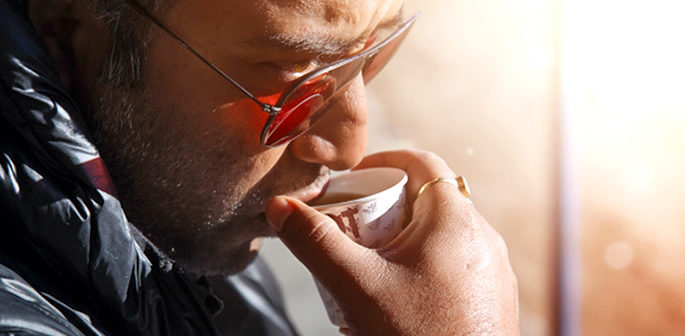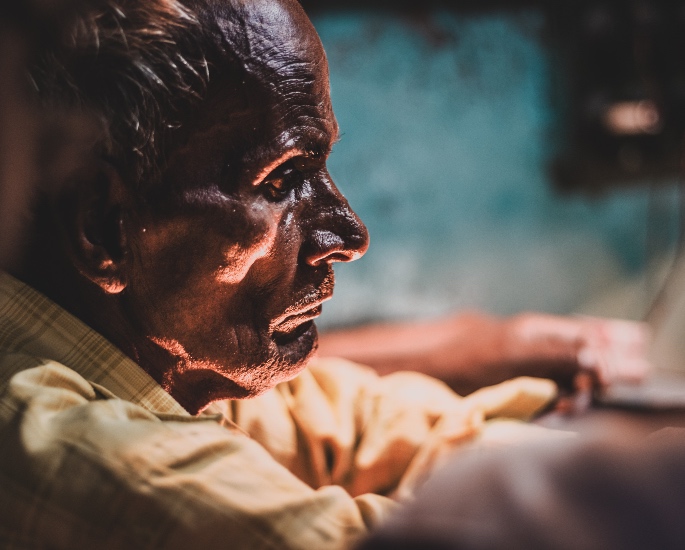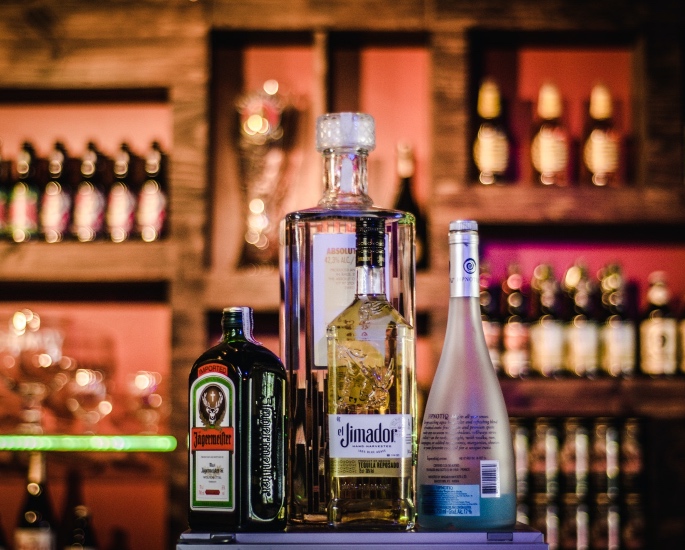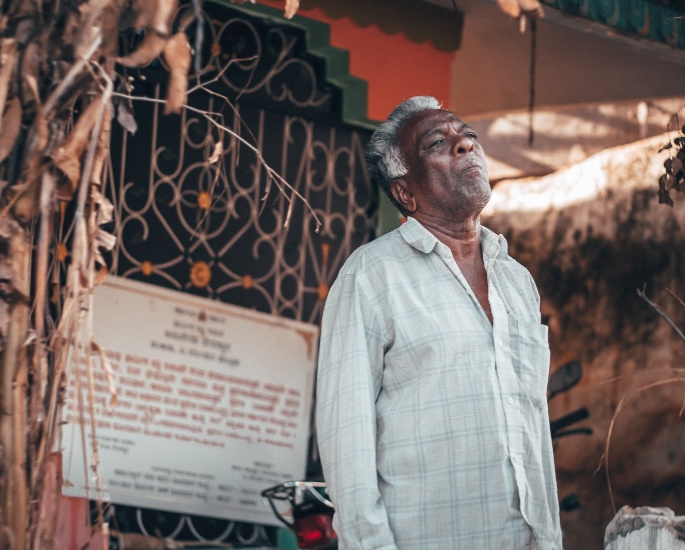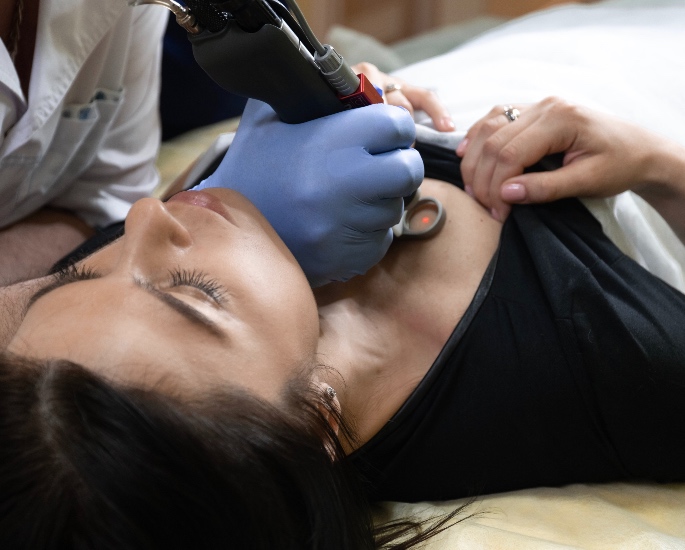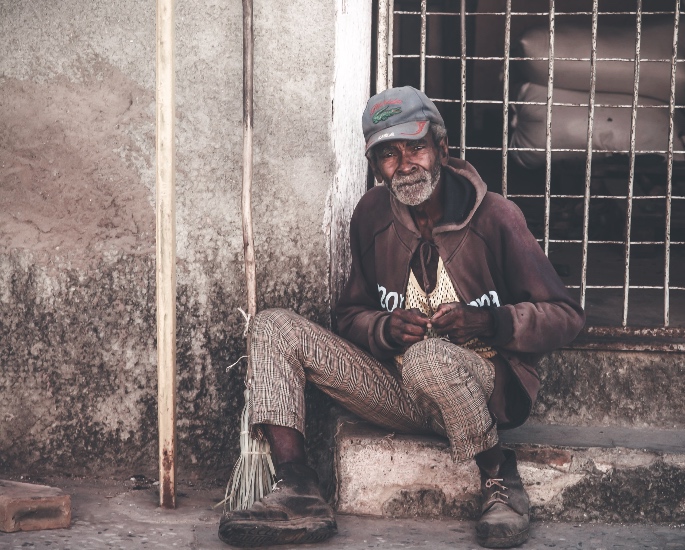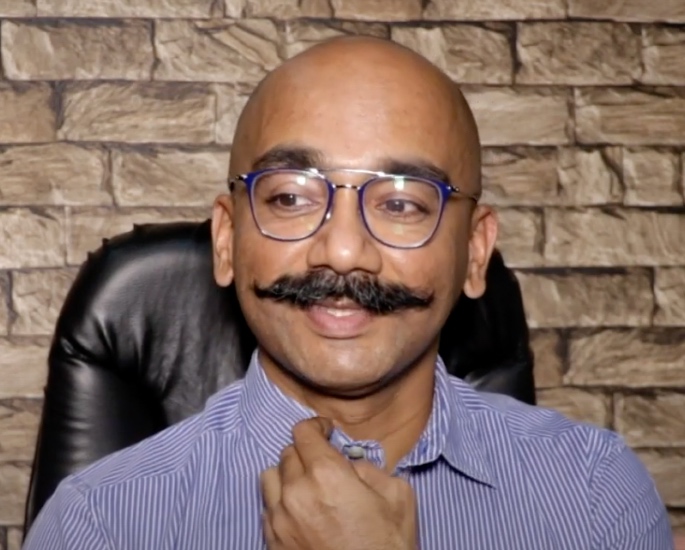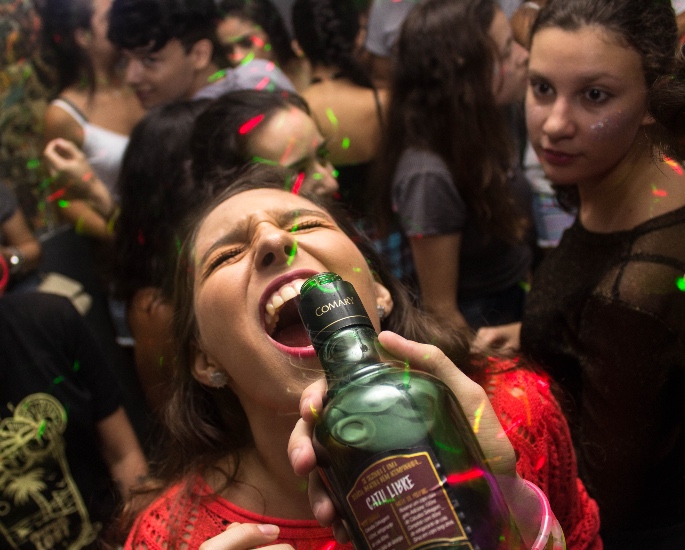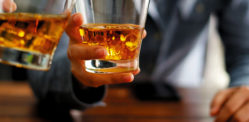"A time when my hands would shake if I didn't drink."
The Indian society masks a dark truth in regards of alcohol abuse.
Alcohol usage across developing countries like India are found to be serious addictions.
Citizens disregard mental and physical health issues due to their lack of awareness of alcoholism.
With different alcohol-related policies in every state of India, these control its production, sales and prices.
However, the BBC found that India consumes more than 663 million litres of alcohol – a rise of 11% of alcohol abuse from 2017.
As a matter of fact, according to IWSR Drinks Market Analysis, “India is the second largest consumer of spirits (whiskey, vodka, gin, rum, tequila, liqueurs), behind China”.
The Alcohol and Drugs Information Centre India, a non-governmental organisation in the southern state of Kerala, found that in the past 20 years, the average age of initiation has dropped from 19 years to 13 years.
This is due to the mass media’s promotion of alcohol consumption as a propaganda that targets young people.
Adverts related to alcohol usage present youngsters or ‘good’ celebrities drinking blissfully. In fact, the Lancet wrote:
“Multinational companies have identified India with its vast unexploited markets as one of the world’s most sought after places for investment”.
Monika Arora, director of an NGO Health Related Information amongst young people, added:
“Drinking water and apple juice is packaged by alcohol companies. It’s all about getting young people to start early and be life-long consumers. Bollywood films now glorify alcohol where the good guys drink.”
With 15% of liver cancers in the country being related with alcohol consumption, the rise of alcohol abuse in the country is due to the lifestyle choices of those unaware of the real consequences.
Alcoholism as a Mental Disease
The World Health Organisation [WHO] considers alcoholism to be a mental disease. However, most people in India lack awareness of this knowledge.
The lack of assistance has become an immense problem for Indian society. This point is raised by the Quint:
“Only one in 38 people who report alcohol dependence are getting any treatment. Only one in 180 people who report alcohol dependence are hospitalised to address their addiction.
“Of those who are alcohol-dependent in India, just 2.6 percent receive treatment and 0.5 percent are hospitalised for treatment.”
Generally, it is very difficult for those affected to access the treatment.
Alcohol consumption is associated with 70% of all liver diseases in the government-run ILBS. Likewise, 15% of liver cancers are due to alcohol abuse.
As a matter of fact, Dr S K Sarin, Director of ILBS, said:
“20 years ago, the most common form of liver disease in India was Hepatitis B. A sea of change has happened since then, with people suffering from Alcoholic Liver Disease (ALD) of the severe type that is not seen even in the west.”
When worldwide institutions like the WHO have started considering alcoholism as a mental disease, the government should have provided an action plan.
The Ministry of Social Justice and Empowerment affirm that their strategy consisted in having a de-addiction centre in every Indian district. However, of the 24 districts, only 11 have followed the strategy.
Whilst alcohol abuse can severely affect mental health, hospitalisation and psychiatric care would be capable of helping.
But reality has set in.
Dr Jateen Ukrani, Consultant Psychiatrist at the PsyCare Neuropsychiatry Centre in Delhi, says:
“There are only 4,000 psychiatrists and 900 clinical psychologists in our country! It is the need of the hour for the government to stop neglecting India’s mental health and focus on developing more manpower”.
The Real Facts
The BBC recorded a recent study of worldwide liquor consumption. It demonstrated that between 1990 and 2017, the yearly use of liquor of an adult grew from 4.3 to 5.9 litres – an increase of 38%.
Author of the study Jakob Manthey explained the rise in alcohol abuse:
“The number of people with sufficient income to purchase alcohol has outpaced the effects of measures aiming to reduce consumption”.
Sources from the Lancet assert a number of incredible facts in regards to alcohol abuse in India.
In fact, 45% of all liquor sold in India is bought by the residents of the southern states of India. It was not surprising when research named Wing of Crisil discovered where the rupees were disappearing to.
“10% of their revenues come from taxes on liquor sales.”
Of course, this is due to the prices of alcohol – like beer – dropping down into lower-income states, in comparison with the upper sides.
Evidence from NIMHANS demonstrates that the poor drink more than they earn. The average amount of money spent on alcohol exceeded the monthly salary of those with the addiction.
The Lancet described this as “a deadly spiral of alcohol and debt”.
However, it appears that ill-health is also a major factor influencing alcohol abuse, particularly in the Indian working-class. Mr. Manthey has in fact said:
“They are increasingly relevant for public health in India and increasing alcohol use will only pronounce this trend”.
But what does that mean for the Indian society? Where does it place them in the world? It was found that India is the number one consumer of whiskey, worldwide.
In fact, one in every two bottles of whiskey brought in the world, is now being sold in India. Consumption of whiskey is therefore three times the one of number two, the US.
Even when the global alcohol consumption dropped in 2018, India still rose by 7% in the worldwide whiskey market.
This means that letting alcohol become affordable in unjust places, leads workers straight to the path of alcohol abuse without even a slight chance of getting to know the consequences of their actions.
When their lives cannot be made any more difficult, the choice of alcohol abuse could lead them to a point of no return.
Combatting Alcohol Abuse
Yogendra Yadav proposed a national plan for the gradual reduction of alcohol abuse in India.
He is the leader of the Swaraj India party, therefore he would reinforce existing laws about sales and retails of alcohol. In this way, revenues from the sales would be used to prevent people from drinking.
However, rendering alcohol usage a moral issue raises an issue with the liberals.
It is considered to be ‘self-defeating’ to enforce the prohibition of alcohol over the liberty of choice, as this leads the black market to blossom.
However, on the contrary, Pratap Bhanu Mehta argued:
“If we really care for freedom, we also need to question our own addiction to the cultural and political economy of alcohol, and find intelligent pathways around a complex problem.”
Although people have the freedom to drink, that does not mean that their freedom shall encroach onto the rights of others.
In the same way, the freedom to drink should not negatively affect their own everyday routines.
However, combatting alcohol abuse appears to be extremely difficult. With 11% of Indians binge-drinking, compared to 16% worldwide, the reasons become obvious.
The Lancet explained that India’s alcohol industry influences greatly political processes, both as representatives but also as donations.
In addition to that, because 1/5 of the revenue comes from alcohol taxation, the states hesitate to prevent excessive alcohol usage.
However, experts assert that India will lose much more than it gains if this continues.
Vivek Benegal, assistant professor of psychiatry at NIMHANS, explained the role of politics in alcohol abuse.
“Because of the political expediency surrounding prohibition, what is not being looked at is demand reduction strategies”.
“Researchers from NIMHANS have calculated that the direct and indirect costs attributable to alcohol addiction is more than triple the profits of alcohol taxation”.
This means that India will remain focused on those in extreme need, rather than on the prevention of alcoholism. The Professor continues:
“This situation means that official policy concentrates on just the 4% of the alcohol-dependent adult male population. It ignores the 20% of the population who are ‘at risk’ of serious alcohol abuse.”
As a matter of fact, Chief of AIIMS Rajat Ray admitted:
“The treatment of alcoholism is a low priority in Indian’s health sector”
“Just 600 doctors have been trained to treat alcohol abuse in the past decade.”
“It’s seen as deviant behaviour among most doctors: a hopeless situation that is unrewarding to treat and so there’s no motivation or financial incentive on doctors to work in this field”.
To begin the umpteenth battle against alcohol abuse, hoping it to be the last, the Indian Government has set a target.
Via AIIMS, it will take them 4 years to train 1000 doctors and paramedics, 500 nurses to specialise in alcohol abuse treatment.
Following the training, they will be deployed across the hospital districts of India, in order to raise access to treatment.
De-Addiction Centres
In the same way, the Society for Promotion of Youth and Masses (SPYM) would concentrate the governmental de-addiction centres on children, women and the underprivileged.
The head of Advocacy and Government Affairs at the United Nations Organisation for Drugs and Crime, Samarth Pathak, talked about combatting alcoholism. He said:
“Substance abuse in any form, be it illicit drugs or alcohol, is harmful for the health and well being of the user as well as the community.
“It is an impediment to the security and development of a country, and adversely affects the global sustainability agenda.
“The negative impact is borne not only by the user, but also the family and the community.”
People suffering of alcoholism and any other related addiction, will be enrolled in a de-addiction centre. With a maximum period of 3 months, patients will be helped to overcome their addiction.
Observer Mahi Goyal told the saddest part of such project, accompanied by Dr Jateen Ukrani.
“Age at consuming first drink in such cases is around 13 years but they come into treatment a decade later due to various factors.
“Steps should be taken to identify and treat such children early in their adolescence so that complications are prevented later. Only then can we ensure efficient preventive assistance.”
As a matter of fact, once left, patients will be going back to the same pressuring environment that led them to their addiction in the first place.
Volunteer Rohan Sachdeva agreed. However, Sachdeva added that the limited amount of time may not be enough for all patients to recover. These are his words:
“Every patient is a different case and will take his/her own time to heal.
“While the therapies provided at the centre work wonders in the treatment, the time limitation of three months fails to provide complete help to a lot of patients.
“Shouldn’t the patient get to decide when he/she feels better to get out of the centre?”
Impacts on Daily Lives
In 2012, 1/3 of fatal road accidents were attributed to drunk drivers.
NIMHANS found that in Bangalore city, approximately 28% of the injuries caused by road accidents were correlated with alcohol. This was also because about 40% of drivers were intoxicated.
Korlakunta et al. found that “high-risk behaviour was more common among alcohol-dependent individuals with road traffic accidents being the most frequently observed.”
According to the National Mental Healthy Survey, 10% of adult men were alcohol abusing in 2015-2016. In addition to that, 60% of the deaths correlated with cirrhosis of liver were also due to alcohol abuse.
But it is not just the users’ health that is affected. Alcohol abuse is strongly correlated with domestic violence, which is why rural women were the greatest supporters of the prohibition.
In fact, domestic violence against both children and women affect their daily lives greatly.
The education of the children will be put on a halt, and women will attempt to protect their family members. This disruption between relationships will put a strain on communication, and consequences will follow.
The Department of Community Medicine in the Tamil Nadu wrote a specific article in relation with alcoholism. The following is a short extract:
“It was found that alcohol-dependent persons spent more money than they earned.
“They were forced to take loans to spend for their expenses related to alcohol consumption.
“On an average, 12.2 working days were lost to the habit and around 60% of the families were financially supported by the income from other family members.”
Likewise, according to the WHO, the number of fatal cases per year is rising. This is because the Government fails to prevent the 3.3 million alcohol-related deaths that happen yearly.
However, encouragement may be the key to save them. In fact, non-clinical setting in the de-addiction centres would encourage patients to form support groups and therapies – together.
The Real Stories
People abuse the use of alcohol for a variety of reasons. Everything can change in one night, with one sip.
Change is constant. But as the days change, so do habits.
Vijay Vikram has found the courage and strength to share his story as an alcohol abuser. His encouraging words have left his readers speechless.
“It was in 1999 when I first had beer. I was 21 and this was first time I was having alcohol. I wanted to be an army officer then.
“I passed the written exam a number of times but whenever I went for the interview, I got rejected. As a result, I started drinking a lot; alcohol became a part of my life. I was still lucky enough to finish my MBA and get a job.
“This was in 2004, a time when my hands would shake if I didn’t drink. My day started and ended with alcohol. ”
Mr. Vikram explained how in 2005, he was diagnosed with severe pancreatitis and renal failure.
“I had a 20% chance of survival.”
However, with the appropriate treatment, all the affected organs began functioning and responding. It took him 45 days to get discharged and 8 months to start leading a normal life.
“At times, I felt like ending my life because of the excruciating pain. But when I thought of my family, I wanted to live just for them.”
With hope, he rebuilt his career and worked in Mumbai. By 2009, he worked with some of India’s biggest TV shows. He told that in the future, he aims to be a sports presenter and an actor.
Mr. Vikram has been alcohol-free since 2005, and Satyamev Jayate helped him find the inspiration to tell his story to the world.
“To those who are battling alcoholism and depression, I want to say that nothing can stop you from living.
“This too shall pass.”
This too shall pass, Mr. Vikram said. Something this short and yet so powerful, demonstrates how much will is needed to overcome addictions.
Women Drink Too
“There’s so much expected from us, but we’re told ‘don’t complain, don’t give up, keep hustling and stretching yourself’. Ultimately, the rubber band snaps and breaks.”
Said a recovering woman – her story is next.
In fact, it isn’t just men that are affected. It is certainly not just them. Statistics may say their number is less, but women drink too.
“There’s nothing glamorous or poetic about alcoholism in women.”
Numbers can never tell their experiences. Numbers are influenced by stereotypical views of women. Women themselves too, may see each other as those stereotypes.
She said it herself.
“I thought that alcoholism in women was a unicorn — only men become drunks. Women are always portrayed sipping mimosas during brunch or elegant glasses of red wine with your girlfriends after work.
“It wasn’t the first time either. I’d been hungover at work, I’ve even fallen asleep at my desk. I had already alienated family members and worried friends. This was my rock bottom.
“Alcohol filled this pit of anxiety and low self-esteem.”
However, she also wrote the way drinking has changed every part of her.
“All our nights out ended with me having to be carried home. “I want to go out but I’m not going to be her babysitter” I’d overhear people commenting.
“It only drove me to drink more to feel less.”
But then her family noticed, and questioned her sudden change. She explained how “alcoholics become pros at hiding their addiction”.
It was a dark irony to read how she mastered manipulation, and was forced to lie to her own mother.
“It’s just stress about work, mama, you’re being ridiculous. Everyone in their 20s feels like this. That smell is just the perfume, you know they all have an alcohol base?”
That was a time in her life when her only desire was to buy an ‘inexpensive bottle of desi tharra’.
“I was only 28, but drinking my life away.”
After a serious life talk with her doctor uncle, she was given the option to go to Alcoholic Anonymous meetings.
She understood that people attach shame to women suffering of alcoholism, because they lost the control they were always supposed to have.
Mental health counsellor Urvashi Bhatia explained why this happens – why is there shame attached to drinking women?
“If we can’t take care of ourselves, how will we be good for others?”
“Alcohol is considered unladylike. So, when we struggle with it, we want to hide to failure of being a ‘good woman’.”
But this too, shall pass. The anonymous woman said this as well:
“I feel lighter now, even with the demon of drinks sitting on my back.
“Don’t shy away from seeking help. Alcoholism in women is a disease like any other and you’re a champion if you can get through it alone, but you don’t need to.”
Treatment and help can be found. Experiences from recovering users demonstrate that it is time to set aside judgement and start helping – really helping.
In this way, Mr Pathak concludes this article, with the concern to let these words sink deep into our souls, ‘to resonate within us as a society before it is too late for our nation’s addicts.’
“A strong response to substance abuse must have it at the crux, a public health-based strategy, focusing on human rights.
“This means looking beyond the statistics and seeing not ‘the addict’, but the ‘human being who needs our help’”.
Drinking and alcohol abuse in India is a problem that is not specific to one state, background or social status. It is present in all walks of Indian society.
Help and support in a country like India is always going to be a challenge. It is a challenge for any nation with a problem of this kind.
But the sooner it is recognised by authorities and more importantly, by suffering individuals who need to get help, the issue will still be one that is difficult to control.



















































